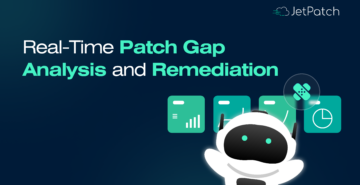The early months of the COVID-19 pandemic revealed a fascinating trend: an upsurge in demand for COBOL programmers. Why was a 60-year-old programming language suddenly back in vogue? It turned out that a large number of U.S. state governments were running unemployment systems on legacy machines that needed updating fast to deal with the deluge.
They’re not the only ones stuck behind the times. As of October 2021, the 20th anniversary of Windows XP, 0.59% of Windows users were still using the legacy operating system. Sure, that doesn’t sound like much, but it still translates to millions of systems, some of which are still in place—running custom 32-bit applications that can’t easily be ported to more modern OSes—in hospitals, industrial settings, and more.
Legacy systems are just one aspect of the challenge when it comes to securing modern IT.
Once upon a time, the number of different types of systems you had to patch was relatively low. Maybe you had a number of Windows or Linux servers for your data, email, and website, along with a selection of monolithic Windows or Mac workstation machines.
That made patching easy; with just a few team members, whose expertise usually overlapped, you could keep all of your systems up to date. Maybe you sometimes had to shut things down for a weekend to roll out patches, but an average IT team could get it all done in a reasonable amount of time.
Today, things aren’t so simple, but many organizations seem to want to believe otherwise. In some cases, they’re putting all their faith in cloud-based security tools, assuming they can cover their entire environment.
In this post, we’ll explore the three biggest challenges organizations face in the real world when it comes to patching hybrid, distributed, and legacy environments—along with tips for keeping each type of environment secure.
Patching Hybrid Environments
Hybrid cloud is easily the most common type of solution out there—chosen by an overwhelming 87% of businesses. The term hybrid encompasses solutions from multiple cloud vendors, public and private, along with on-premises environments and legacy.
The benefits of a hybrid environment are obvious, including more control over security for organizations in regulated industries, along with the advantage of avoiding vendor lock-in.
But a hybrid solution comes with one big drawback: a lack of centralized tools to manage it all. According to one expert, “Ensuring hybrid cloud security is one of the most tedious, sensitive, and error-prone processes in computing itself.”
Cloud configuration is highly complex and growing more so by the day. Indeed, all the major cloud providers offer a range of security certifications, from beginner to advanced.
But even if you have one or even a few people on your team fully certified in cloud configuration management, the whole selling point of cloud is its elasticity and ability to scale.
Your greatest challenge when it comes to hybrid environments is SCALE.
Scale is a good thing: indeed, the greatest promise of the cloud for most businesses is its ability to scale!
But you can’t afford to scale up your team—hiring multiple security specialists for every single cloud environment you’re running. Even if you could, there’s an acute cloud talent shortage out there, and you can’t waste time training existing team members to get them up to speed.
Your best bet when it comes to keeping hybrid environments secure?
A patching solution that incorporates automation and intelligent prediction to eliminate routine tasks and increase your chances of success on the first try.
Patching Distributed Environments
A recent Computer Weekly report explores some of the challenges of the modern and distributed environments you’re dealing with every day: “Historically, a corporate infrastructure largely consisted of a LAN, WAN and private data center that was wrapped inside a secure network parameter.” Today, the report explains, all of that has gone out the window.
In the wake of COVID-19, many organizations are hedging their bets: solidifying their cloud presence while also strengthening their edge and on-premises setups to both streamline and cut costs and in anticipation of employees coming back to work at least part-time. In today’s networks, anything goes, and that gives your business tremendous flexibility.
But in creating those flexible distributed systems that can accommodate a geographically dispersed and diverse workforce, you’re creating another problem for yourself: visibility.
Your greatest challenge when it comes to distributed environments is VISIBILITY.
In a typical organization, you might see at least a few of the following different types of environments:
- Apps, data, and services all migrating to cloud environments for accessibility, availability, and CAPEX cost savings
- Edge computing environments for improved performance for mission-critical applications
- Legacy environments that either can’t be replaced or aren’t feasible to replace at the present time
- On-premises workstations in a range of configurations
- BYOD—employees using their own devices, either on-premises or remotely, generally Windows/Mac (or, for mobile, iOS, or Android)
- SCADA, OT, IoT, and a broad mix of other device types
But gaining visibility across all these types of systems can be a nightmare. From an IT perspective, this all adds up to one truth: You need to secure a more diverse range of systems than ever before, including various OSes and devices.
Your best bet when it comes to keeping distributed networks secure?
A unified dashboard that gives you relevant monitoring, plus KPIs and simplified reporting for continuous improvement across all of your environments.
Patching Legacy Environments
And now we return to the statistics above; the large number of organizations that are still running legacy applications and operating systems—with the path to cloud migration barred by development expenses as well as the threat of user disruption.
One problem with legacy environments is that in a large number of cases, the IT and development teams who brought the legacy system on board are no longer working for your organization. In the case of those COBOL programmers, many are long retired! That makes keeping system configuration under control challenging at best.
Your greatest challenge when it comes to hybrid environments is CONFIGURATION.
That means you may not have any experts on your team who are familiar with the system. It may be running a very specific OS that cannot be modified without affecting the data or application stored on the server.
But legacy systems can also contain very old vulnerabilities that pose a risk to your entire organization. This can sometimes be solved by network segmentation, but sometimes there’s no choice other than to leave things more open.
In this case, you need to both monitor the legacy system, patching where possible, plus take extra measures to secure the rest of your network and ensure that legacy systems don’t give attackers an easy entry point into your entire business’ IT systems.
Your best bet when it comes to keeping distributed networks secure?
A solution that centralizes configuration management through a unified control center, putting you behind the wheel and giving you solid insights into the health of your entire environment.
For Today’s Complex IT Security, JetPatch Has You Covered
There’s almost no such thing as a completely virtual business, and that’s why a completely virtual solution will generally not meet your needs in the most robust possible way. Instead, you need a flexible solution that covers you in the cloud, across multiple clouds, a wide variety of OSes, and on-premises and legacy as well.
JetPatch is a modern cloud-based SaaS service that goes way beyond cloud for continuous vulnerability scanning and rapid remediation.
Only JetPatch offers you:
- Centralized discovery and monitoring across all modern environments
- Fast time to remediation with automated rollouts and predictive patching
- Seamless integration with existing vulnerability scanners, ITSM, and more
With JetPatch on your security team, you can go beyond cloud—securing all of today’s complex systems, including all of your hybrid, distributed, and legacy environments.
With consistent vulnerability and patch management, JetPatch sets you on course for centralized governance, regulatory compliance, and a higher level of IT maturity—so you can control your risk picture and ensure business continuity and resilience.
Ready to take JetPatch for a test drive and get patching under control? Your free trial is waiting!



